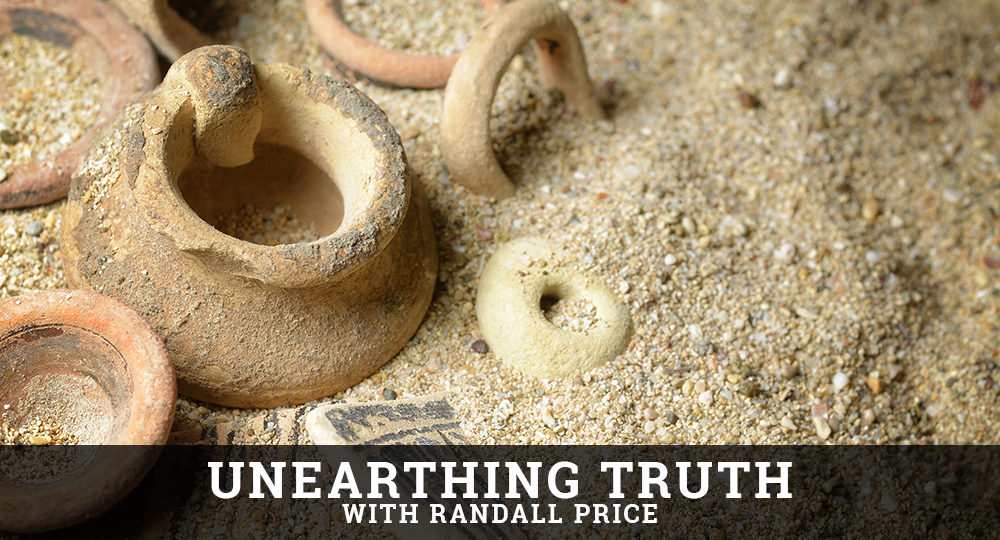The Lost Kingdom of Israel
The Bible records that Saul, David, and Solomon ruled over the united kingdom of Israel from the Judean capital in Jerusalem in the 11th and 10th centuries BC. However, a contrary view arose in the 1980s that claimed these kings were not historical figures but, rather, literary imagination.
Proponents rejected the united monarchy, arguing that only small chiefdoms existed in this early period, with no sign of a late 11th- to 10th-century BC empire containing a palace or temple, as the Bible describes. They believe the kingdom of Israel developed first (9th century BC); and after its destruction, the kingdom of Judah formed (late 8th century BC). Thus, critical scholarship lost the biblical kingdom of Israel.
Until recently, only sparse archaeological data for an early Israelite kingdom existed. Discovered in 1908, the Gezer Calendar, dated to the 10th century BC, contained an agricultural calendar that followed the biblical cycle for sowing and harvesting crops (Ex. 23:16; 34:22; Lev. 25). Moreover, the name in this document, Abijah, appears predominantly in the 10th century BC.
However, archaeological evidence from many excavations inside and outside Jerusalem over the past two decades supports the historicity of Israel’s united kingdom. A recent study of radiocarbon dating of pottery from Tel Gezer determined that a monarchy might have united the lands during this important period: “The 10th century BC [carbon-14]-based date . . . is chronologically compatible with Saul, David and/or Solomon, whose text-based dating (albeit approximate) falls in the 10th century BC (perhaps also the late 11th century BC). . . . Extra-biblical evidence indicates they were real historical figures.”1
At Tel Zayit in Israel’s lowlands, archaeologists found an inscription containing all the letters of the Canaanite alphabet in a clearly stratified 10th-century BC context. Thus, a literate culture already must have existed then, arguing for the existence of Judean-Israelite administrative scribes as part of a centralized kingdom.
Located in the Elah Valley about 19 miles from Jerusalem, Khirbet Qeiyafa, a one-period Iron Age site with a clear destruction layer and important architectural, artifactual, and inscriptional evidence, may be the biblical city of Shaaraim (Hebrew for “two gates”) built in the time of King David (1 Sam. 17:52; 1 Chr. 4:31). Here archaeologists Yosef Garfinkel and Saar Ganor uncovered impressive 11th- to 10th-century BC fortifications and structures, particularly a large royal storeroom that contained organic material dating the destruction layer around 1018 to 948 BC, when Saul, David, and Solomon reigned.2
Other fortified structures included casemate walls, multiple rooms (with one for worship and another for scribal activity), a pillared storage building, and a grand central palace. An estimated 100,000 tons of rock were used to build the city. These massive constructions, typical of a Judahite city, could operate only under an extensive civil administration, which only could have been the Israelite kingdom.
If such a small but well-developed outlying city existed in the 11th and 10th centuries BC, the larger capital city of Jerusalem in the Judean kingdom undoubtedly existed. In fact, in the past 20 years, Israeli archaeologists Ronny Reich and Eli Shukron uncovered walls and fortifications in the ancient City of David; and Eilat Mazar uncovered a Solomonic wall and an inscribed jar in Jerusalem, all dating to the 10th century BC.
Thus, political, literary, and archival activity occurred in Judah during the 11th and 10th centuries BC and fully support Scripture’s description of Israel’s united monarchy, restoring to history the lost kingdom of Israel.
ENDNOTES
-
-
- Lyndelle C. Webster, Samuel R. Wolff, Steven M. Ortiz, Marcella Barbosa, Cameron Coyle, Gary P. Arbino, Michael W. Dee, Quan Hua, and Geraldine E. Jacobsen, “The chronology of Gezer from the end of the late bronze age to iron age II: A meeting point for radiocarbon, archaeology egyptology and the Bible,” PLOS ONE 18:11 (2023), 25.
- Yosef Garfinkel, Saar Ganor, and Michael G. Hasel, In the Footsteps of King David (New York, NY: Thames & Hudson, 2018).
-








